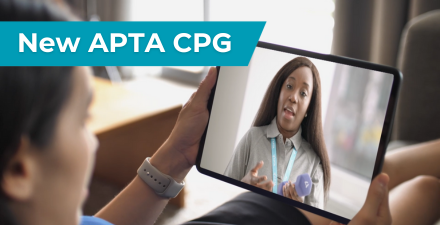The big picture: a telehealth subsidy for providers?
The Federal Communications Commission (FCC) has proposed a pilot project that aims to increase the delivery of telehealth to rural and low-income Americans by way of a $100 million, 3-year funding initiative. The program, known as the Connected Care Pilot, would subsidize a large portion of provider costs for broadband through the Universal Service Fund (USF) program.
However, there are still plenty of details to be worked out, including which providers would qualify for the subsidies, whether the funding would be limited to telehealth services for a limited list of patient conditions, and how compliance with the program would be monitored.
APTA provided FCC with its take on the proposal through a comment letter that emphasizes the inclusion of physical therapists (PTs) as qualified providers, and urges the FCC to think more expansively about the range of conditions that would be appropriate for telehealth services.
Some of what's being proposed—and what we have to say about it
FCC: Wants to establish a system that gives providers flexibility in determining which patients would be best suited to receive telehealth services.
APTA: Agreed. "Providers are in the best position to determine which of their patients would benefit the most from access to telehealth services," our letter states, and adds that "it would be counterproductive to limit which patients providers can treat via telehealth."
FCC: Believes the pilot program should be limited to care for conditions that tend to require several months of treatment, such as behavioral health, opioid dependency, chronic health conditions, and high-risk pregnancies.
APTA: It's a good start, but the program should also prioritize conditions that require frequent visits with a provider, such as common orthopedic and neurological conditions, total knee arthroplasty, and stroke. These conditions can involve multiple visits per week, which can be burdensome for patients.
FCC: Asks for feedback on whether participating patients should be required to contribute to the nonsubsidized share of the costs, with certain limits on what they'd be asked to pay.
APTA: Bad idea. It could be a disincentive to some patients and will impede the wider adoption of telehealth in the long run. Besides, patients already have to pay for their own internet connection, and the FCC proposal doesn't cover costs of any other end-user devices.
FCC: Wants to limit the program to certain nonprofit or public health care providers such as teaching hospitals, medical schools, community health and mental health centers, local health departments, nonprofit hospitals, rural health clinics, skilled nursing facilities, and a "consortia" of health care providers associated with these facilities.
APTA: That's too narrow. The program should include providers who have not always been associated with telehealth—especially PTs, whose services are "well-suited to the medium," as stated in our letter. On top of that, the profession already is paving the way for its role in telehealth through the Physical Therapy Compact now enacted in 26 states.
FCC: Asks for parameters around choosing which applications to accept, in addition to overall cost, and whether the applicant would serve program goals and has the capacity to operate and evaluate the outcomes of the program.
APTA: The program also should factor in whether the proposed program is using telehealth in innovative ways. Our comments encourage FCC to push the boundaries of what telehealth has to offer.
FCC: Thinks it may be a good idea to award additional points to projects that would serve areas or populations that have "well-documented health care disparities"—places such as tribal lands and rural areas, and populations such as military veterans. The agency also proposes that additional points be to awarded to projects that are "documented to benefit from connected care, such as opioid dependency, diabetes, heart disease, and high-risk pregnancy."
APTA: We agree and disagree. While targeting areas and populations that are experiencing health disparities is an excellent idea, awarding extra points to only primary or mental health care is far too limiting. Our comments encourage FCC to be more inclusive in its consideration of provider types considered, "and score them on their ability to positively impact patients' lives, not on the specific discipline of medicine they practice."
FCC: Wants to establish metrics for evaluating progress that could include reductions in emergency room or urgent care visits, decreases in hospital admissions or readmissions, changes in condition-specific outcomes, and patient satisfaction.
APTA: Measurement is important, but don't reinvent the wheel; there are plenty of existing metrics. The US Centers for Medicare and Medicaid Services is a good place to start—the agency has developed a host of quality-reporting measures through its Quality Reporting Program.
What's next?
Once the FCC reviews the feedback it has received, it will issue a final rule outlining the details of the pilot including when and how to apply to participate. APTA’s Regulatory Affairs team will monitor any developments.
